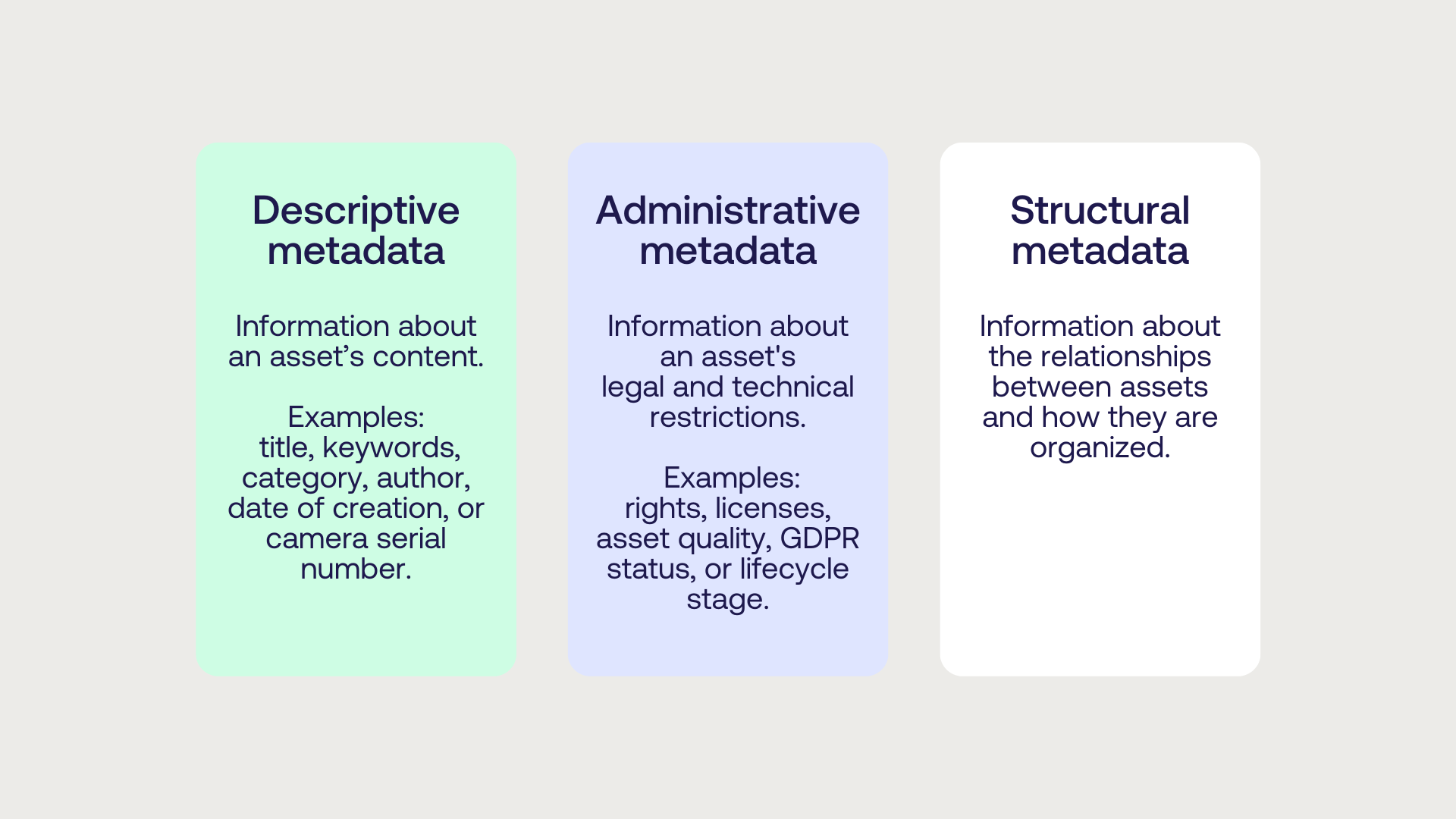

What is metadata?
To explain what metadata management refers to, it’s crucial to understand what metadata is. Explained in short, metadata is data about data, offering information about a specific file. It can be anything from keywords and descriptions to EXIF data, time and date, and version history.
Sometimes, this data is present from the file’s inception; other times, it is added or adjusted later. Either way, it’s an essential part of the file's content, and when managed effectively, it can increase the value and Return on Investment (ROI) of content items.
LEARN MORE: How to Find the Right Keywords for Your Business: Interview with Clemency Wright
While some organizations pay little attention to metadata, others save precious resources and increase overall data control by optimizing metadata structures. For example, instead of relying on folder structures, they make files searchable through keywords and dynamic filters.
Efficient metadata management can enable you to construct automatic workflows for revoking, publishing, or sending digital assets without human interference. Additionally, files with extensive and up-to-date metadata are easier for people and computers to assess, increasing overall control and information sharing.

Three types of metadata
Since metadata is a broadly used term, it can be helpful to break down this concept into three separate categories: Descriptive, Administrative, and Structural.
Descriptive metadata refers to information about the asset’s actual content. It could be keywords and content categories, but also embedded information like the author’s name and contact information, the asset’s date of creation, or a camera’s serial number.
When managed effectively, descriptive metadata would often enable people to easily locate content items, make advanced searches in massive collections, or communicate information about specific content items.
LEARN MORE: Macros - the fastest way to apply metadata to your digital assets
Administrative metadata allows for more advanced management of digital assets, including information about their legal and technical restrictions, rights, licenses, asset quality, lifecycle stage, and much more.
These forms of metadata are often customized to fit the relevant industries. For example, an e-commerce company may include information about campaigns and release dates, while an entertainment company may focus more on copyright, talent approval status, or image consent(s).
While administrative data is important for information sharing, it’s also a central component of metadata-driven workflows, often playing the part of antecedents - or triggers - of desired results.
LEARN MORE: How to work faster with metadata-driven workflows
Structural metadata refers to data used to describe the structure of stored resources and the relationships between them. It is commonly used in machine processing and works in the background to ensure a smoother end-user experience.
Oftentimes, structural metadata is compared to the overview of book chapters, with its main purpose being to provide an overall structure to its contents.

Why metadata management matters
No matter the industry, chances are high that you’ve encountered challenges when managing digital assets: There may have been problems locating specific files, uncertainties about whether the file is correct, or questions about a specific piece of content, for example, regarding the license agreement or approval status.
With the explosion of digital channels, sites, and consumer touchpoints, the challenges above are more prominent than ever, which is why anyone working with content should be mindful of metadata management.
LEARN MORE: DAM trends - embracing DAM 3.0 for effective content operations
Metadata management can be effective in solving many pressing challenges, including, but not limited to:
-
Finding the right content items
-
Ensuring a single source of truth
-
Allowing professionals to stay up-to-date on the assets' lifecycle
-
Keeping track of rights and licenses
-
Ensuring that the right content is available to the right people

Let’s talk!
Do you want to bring your metadata management to the next level? Book a meeting with one of our experts to learn more about what Fotoware can offer your organization.


